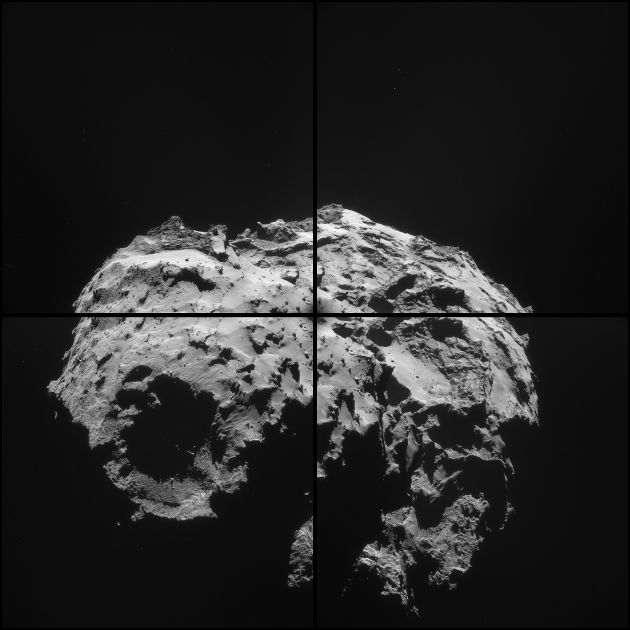
This animation comprises 24 montages based on images acquired by the navigation camera on the European Space Agency’s Rosetta spacecraft orbiting Comet 67P/Churyumov-Gerasimenko between November 19 and December 3, 2014. During this period, Rosetta completed an almost full revolution at about 19 miles (30 kilometers) from the comet. These images were selected in such a way that their sequence appears to be continuous, a combined effect of Rosetta’s motion with respect to the comet and the comet’s own rotation (every 12.4 hours). Credit: ESA/Rosetta/NAVCAM
Data from ESA’s Rosetta spacecraft reveals that there has been a significant increase in the amount of water “pouring” out of comet 67P/Churyumov-Gerasimenko, the comet on which the Rosetta mission’s Philae lander touched down in November 2014.
There has been a significant increase in the amount of water “pouring” out of comet 67P/Churyumov-Gerasimenko, the comet on which the Rosetta mission’s Philae lander touched down in November 2014.
The 2.5-mile-wide (4-kilometer) comet was releasing the earthly equivalent of 40 ounces (1.2 liters) of water into space every second at the end of August 2014. The observations were made by NASA’s Microwave Instrument for Rosetta Orbiter (MIRO), aboard the European Space Agency’s Rosetta spacecraft. Science results from the MIRO team were released today as part of a special Rosetta-related issue of the journal Science.
“In observations over a period of three months [June through August, 2014], the amount of water in vapor form that the comet was dumping into space grew about tenfold,” said Sam Gulkis, principal investigator of the MIRO instrument at NASA’s Jet Propulsion Laboratory in Pasadena, California, and lead author of a paper appearing in the special issue. “To be up close and personal with a comet for an extended period of time has provided us with an unprecedented opportunity to see how comets transform from cold, icy bodies to active objects spewing out gas and dust as they get closer to the sun.”
The MIRO instrument is a small and lightweight spectrometer that can map the abundance, temperature, and velocity of cometary water vapor and other molecules that the nucleus releases. It can also measure the temperature up to about one inch (two centimeters) below the surface of the comet’s nucleus. One reason the subsurface temperature is important is that the observed gases likely come from sublimating ices beneath the surface. By combining information on both the gas and the subsurface, MIRO will be able to study this process in detail.
Also in the paper released today, the MIRO team reports that 67P spews out more gas from certain locations and at certain times during its “day.” The nucleus of 67P consists of two lobes of different sizes (often referred to as the “body” and “head” because of its duck-like shape), connected by a neck region. A substantial portion of the measured outgassing from June through September 2014 occurred from the neck region during the afternoon.
“That situation may be changing now that the comet is getting warmer,” said Gulkis. “MIRO observations would need to be carefully analyzed to determine which factors in addition to the sun’s warmth are responsible for the cometary outgassing.”
Observations are continuing to search for variability in the production rate and changes in the parts of the nucleus that release gas as the comet’s distance from the sun changes. This information will help scientists understand how comets evolve as they orbit and move toward and then away from the sun. The gas production rate is also important to the Rosetta navigation team controlling the spacecraft, as this flowing gas can alter the trajectory of the spacecraft.
In another 67P paper released today, it was revealed that the comet’s atmosphere, or coma, is much less homogenous than expected and that comet outgassing varies significantly over time.
“If we would have just seen a steady increase of gases as we closed in on the comet, there would be no question about the heterogeneity of the nucleus,” said Myrtha Hässig, a NASA-sponsored scientist from the Southwest Research Institute in San Antonio. “Instead we saw spikes in water readings, and a few hours later, a spike in carbon dioxide readings. This variation could be a temperature effect or a seasonal effect, or it could point to the possibility of comet migrations in the early solar system.”
The measurements on the coma were made by the Rosetta Orbiter Spectrometer for Ion and Neutral Analysis Double Focusing Mass Spectrometer (ROSINA DFMS) instrument. Measuring the in situ coma composition at the position of the spacecraft, ROSINA data indicate that the water vapor signal is strongest overall. However, there are periods when the carbon monoxide and carbon dioxide abundances rival that of water.
“Taken together, the MIRO outgassing results and results about heterogeneous fountains from ROSINA suggest fascinating new details to be learned about how comets work,” said Claudia Alexander, NASA project scientist for the U.S. Rosetta team, from JPL. “These results are helping us move the field forward on how comets operate on a fundamental level.”
Rosetta is currently about 107 million miles (171 million kilometers) from Earth and about 92 million miles (148 million kilometers) from the sun. Comets are time capsules containing primitive material left over from the epoch when the sun and its planets formed. By studying the gas, dust, and structure of the nucleus and organic materials associated with the comet, via both remote and in situ observations, the Rosetta mission should become a key to unlocking the history and evolution of our solar system, as well as answering questions regarding the origin of Earth’s water and perhaps even life. Rosetta is the first mission in history to rendezvous with a comet, escort it as it orbits the sun, and deploy a lander to its surface.
Rosetta is an ESA mission with contributions from its member states and NASA. Rosetta’s Philae lander is provided by a consortium led by the German Aerospace Center, Cologne; Max Planck Institute for Solar System Research, Göttingen; French National Space Agency, Paris; and the Italian Space Agency, Rome. JPL, a Division of the California Institute of Technology, Pasadena, manages the U.S. contribution of the Rosetta mission for NASA’s Science Mission Directorate in Washington. JPL also built the MIRO and hosts its principal investigator, Samuel Gulkis. The Southwest Research Institute (San Antonio and Boulder), developed the Rosetta orbiter’s IES and Alice instruments, and hosts their principal investigators, James Burch (IES) and Alan Stern (Alice).
References:
“Subsurface properties and early activity of comet 67P/Churyumov-Gerasimenko” by Samuel Gulkis, Mark Allen, Paul Von Allmen, Gerard Beaudin, Nicolas Biver, Dominique Bockelée-Morvan, Mathieu Choukroun, Jacques Crovisier, Björn J. R. Davidsson, Pierre Encrenaz, Therese Encrenaz, Margaret Frerking, Paul Hartogh, Mark Hofstadter, Wing-Huen Ip, Michael Janssen, Christopher Jarchow, Stephen Keihm, Seungwon Lee, Emmanuel Lellouch, Cedric Leyrat, Ladislav Rezac, F. Peter Schloerb and Thomas Spilker, 23 January 2015, Science.
DOI: 10.1126/science.aaa0709
“Dust measurements in the coma of comet 67P/Churyumov-Gerasimenko inbound to the Sun” by Alessandra Rotundi, Holger Sierks, Vincenzo Della Corte, Marco Fulle, Pedro J. Gutierrez, Luisa Lara, Cesare Barbieri, Philippe L. Lamy, Rafael Rodrigo, Detlef Koschny, Hans Rickman, Horst Uwe Keller, José J. López-Moreno, Mario Accolla, Jessica Agarwal, Michael F. A’Hearn, Nicolas Altobelli, Francesco Angrilli, M. Antonietta Barucci, Jean-Loup Bertaux, Ivano Bertini, Dennis Bodewits, Ezio Bussoletti, Luigi Colangeli, Massimo Cosi, Gabriele Cremonese, Jean-Francois Crifo, Vania Da Deppo, Björn Davidsson, Stefano Debei, Mariolino De Cecco, Francesca Esposito, Marco Ferrari, Sonia Fornasier, Frank Giovane, Bo Gustafson, Simon F. Green, Olivier Groussin, Eberhard Grün, Carsten Güttler, Miguel L. Herranz, Stubbe F. Hviid, Wing Ip, Stavro Ivanovski, José M. Jerónimo, Laurent Jorda, Joerg Knollenberg, Rainer Kramm, Ekkehard Kührt, Michael Küppers, Monica Lazzarin, Mark R. Leese, Antonio C. López-Jiménez, Francesca Lucarelli, Stephen C. Lowry, Francesco Marzari, Elena Mazzotta Epifani, J. Anthony M. Mcdonnell, Vito Mennella, Harald Michalik, Antonio Molina, Rafael Morales, Fernando Moreno, Stefano Mottola, Giampiero Naletto, Nilda Oklay, José L. Ortiz, Ernesto Palomba, Pasquale Palumbo, Jean-Marie Perrin, Julio Rodríguez, Lola Sabau, Colin Snodgrass, Roberto Sordini, Nicolas Thomas, Cecilia Tubiana, Jean-Baptiste Vincent, Paul Weissman, Klaus-Peter Wenzel, Vladimir Zakharov and John C. Zarnecki, 23 January 2015, Science.
DOI: 10.1126/science.aaa3905
“The organic-rich surface of comet 67P/Churyumov-Gerasimenko as seen by VIRTIS/Rosetta” by F. Capaccioni, A. Coradini, G. Filacchione, S. Erard, G. Arnold, P. Drossart, M. C. De Sanctis, D. Bockelee-Morvan, M. T. Capria, F. Tosi, C. Leyrat, B. Schmitt, E. Quirico, P. Cerroni, V. Mennella, A. Raponi, M. Ciarniello, T. Mccord, L. Moroz, E. Palomba, E. Ammannito, M. A. Barucci, G. Bellucci, J. Benkhoff, J. P. Bibring, A. Blanco, M. Blecka, R. Carlson, U. Carsenty, L. Colangeli, M. Combes, M. Combi, J. Crovisier, T. Encrenaz, C. Federico, U. Fink, S. Fonti, W. H. Ip, P. Irwin, R. Jaumann, E. Kuehrt, Y. Langevin, G. Magni, S. Mottola, V. Orofino, P. Palumbo, G. Piccioni, U. Schade, F. Taylor, D. Tiphene, G. P. Tozzi, P. Beck, N. Biver, L. Bonal, J.-Ph. Combe, D. Despan, E. Flamini, S. Fornasier, A. Frigeri, D. Grassi, M. Gudipati, A. Longobardo, K. Markus, F. Merlin, R. Orosei, G. Rinaldi, K. Stephan, M. Cartacci, A. Cicchetti, S. Giuppi, Y. Hello, F. Henry, S. Jacquinod, R. Noschese, G. Peter, R. Politi, J. M. Reess and A. Semery, 23 January 2015, Science.
DOI: 10.1126/science.aaa0628
“The morphological diversity of comet 67P/Churyumov-Gerasimenko” by Nicolas Thomas, Holger Sierks, Cesare Barbieri, Philippe L. Lamy, Rafael Rodrigo, Hans Rickman, Detlef Koschny, Horst Uwe Keller, Jessica Agarwal, Michael F. A’hearn, Francesco Angrilli, Anne-Therese Auger, M. Antonella Barucci, Jean-Loup Bertaux, Ivano Bertini, Sebastien Besse, Dennis Bodewits, Gabriele Cremonese, Vania Da Deppo, Björn Davidsson, Mariolino De Cecco, Stefano Debei, Mohamed Ramy El-Maarry, Francesca Ferri, Sonia Fornasier, Marco Fulle, Lorenza Giacomini, Olivier Groussin, Pedro J. Gutierrez, Carsten Güttler, Stubbe F. Hviid, Wing-Huen Ip, Laurent Jorda, Jörg Knollenberg, J.-Rainer Kramm, Ekkehard Kührt, Michael Küppers, Fiorangela La Forgia, Luisa M. Lara, Monica Lazzarin, Josè J. Lopez Moreno, Sara Magrin, Simone Marchi, Francesco Marzari, Matteo Massironi, Harald Michalik, Richard Moissl, Stefano Mottola, Giampiero Naletto, Nilda Oklay, Maurizio Pajola, Antoine Pommerol, Frank Preusker, Lola Sabau, Frank Scholten, Colin Snodgrass, Cecilia Tubiana, Jean-Baptiste Vincent and Klaus-Peter Wenzel, 23 January 2015, Science.
DOI: 10.1126/science.aaa0440
“67P/Churyumov-Gerasimenko, a Jupiter family comet with a high D/H ratio” by K. Altwegg, H. Balsiger, A. Bar-Nun, J. J. Berthelier, A. Bieler, P. Bochsler, C. Briois, U. Calmonte, M. Combi, J. De Keyser, P. Eberhardt, B. Fiethe, S. Fuselier, S. Gasc, T. I. Gombosi, K.C. Hansen, M. Hässig, A. Jäckel, E. Kopp, A. Korth, L. Leroy, U. Mall, B. Marty, O. Mousis, E. Neefs, T. Owen, H. Rème, M. Rubin, T. Sémon, C.-Y. Tzou, H. Waite and P. Wurz, 23 January 2015, Science.
DOI: 10.1126/science.1261952
“On the nucleus structure and activity of comet 67P/Churyumov-Gerasimenko” by Holger Sierks, Cesare Barbieri, Philippe L. Lamy, Rafael Rodrigo, Detlef Koschny, Hans Rickman, Horst Uwe Keller, Jessica Agarwal, Michael F. A’Hearn, Francesco Angrilli, Anne-Therese Auger, M. Antonella Barucci, Jean-Loup Bertaux, Ivano Bertini, Sebastien Besse, Dennis Bodewits, Claire Capanna, Gabriele Cremonese, Vania Da Deppo, Björn Davidsson, Stefano Debei, Mariolino De Cecco, Francesca Ferri, Sonia Fornasier, Marco Fulle, Robert Gaskell, Lorenza Giacomini, Olivier Groussin, Pablo Gutierrez-Marques, Pedro J. Gutiérrez, Carsten Güttler, Nick Hoekzema, Stubbe F. Hviid, Wing-Huen Ip, Laurent Jorda, Jörg Knollenberg, Gabor Kovacs, J. Rainer Kramm, Ekkehard Kührt, Michael Küppers, Fiorangela La Forgia, Luisa M. Lara, Monica Lazzarin, Cédric Leyrat, Josè J. Lopez Moreno, Sara Magrin, Simone Marchi, Francesco Marzari, Matteo Massironi, Harald Michalik, Richard Moissl, Stefano Mottola, Giampiero Naletto, Nilda Oklay, Maurizio Pajola, Marco Pertile, Frank Preusker, Lola Sabau, Frank Scholten, Colin Snodgrass, Nicolas Thomas, Cecilia Tubiana, Jean-Baptiste Vincent, Klaus-Peter Wenzel, Mirco Zaccariotto and Martin Pätzold, 23 January 2015, Science.
DOI: 10.1126/science.aaa1044
“Time variability and heterogeneity in the coma of 67P/Churyumov-Gerasimenko” by M. Hässig, K. Altwegg, H. Balsiger, A. Bar-Nun, J. J. Berthelier, A. Bieler, P. Bochsler, C. Briois, U. Calmonte, M. Combi, J. De Keyser, P. Eberhardt, B. Fiethe, S. A. Fuselier, M. Galand, S. Gasc, T. I. Gombosi, K. C. Hansen, A. Jäckel, H. U. Keller, E. Kopp, A. Korth, E. Kührt, L. Le Roy, U. Mall, B. Marty, O. Mousis, E. Neefs, T. Owen, H. Rème, M. Rubin, T. Sémon, C. Tornow, C.-Y. Tzou, J. H. Waite and P. Wurz, 23 January 2015, Science.
DOI: 10.1126/science.aaa0276
“Birth of a comet magnetosphere: A spring of water ions” by Hans Nilsson, Gabriella Stenberg Wieser, Etienne Behar, Cyril Simon Wedlund, Herbert Gunell, Masatoshi Yamauchi, Rickard Lundin, Stas Barabash, Martin Wieser, Chris Carr, Emanuele Cupido, James L. Burch, Andrei Fedorov, Jean-André Sauvaud, Hannu Koskinen, Esa Kallio, Jean-Pierre Lebreton, Anders Eriksson, Niklas Edberg, Raymond Goldstein, Pierre Henri, Christoph Koenders, Prachet Mokashi, Zoltan Nemeth, Ingo Richter, Karoly Szego, Martin Volwerk, Claire Vallat and Martin Rubin, 23 January 2015, Science.
DOI: 10.1126/science.aaa0571

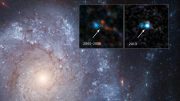
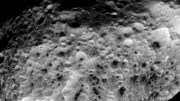
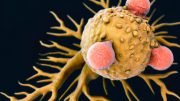
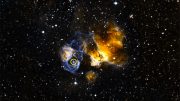
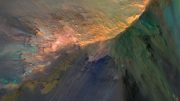


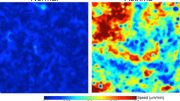
Be the first to comment on "Research Shows a Significant Increase in the Amount of Water “Pouring” Out of Comet 67P"